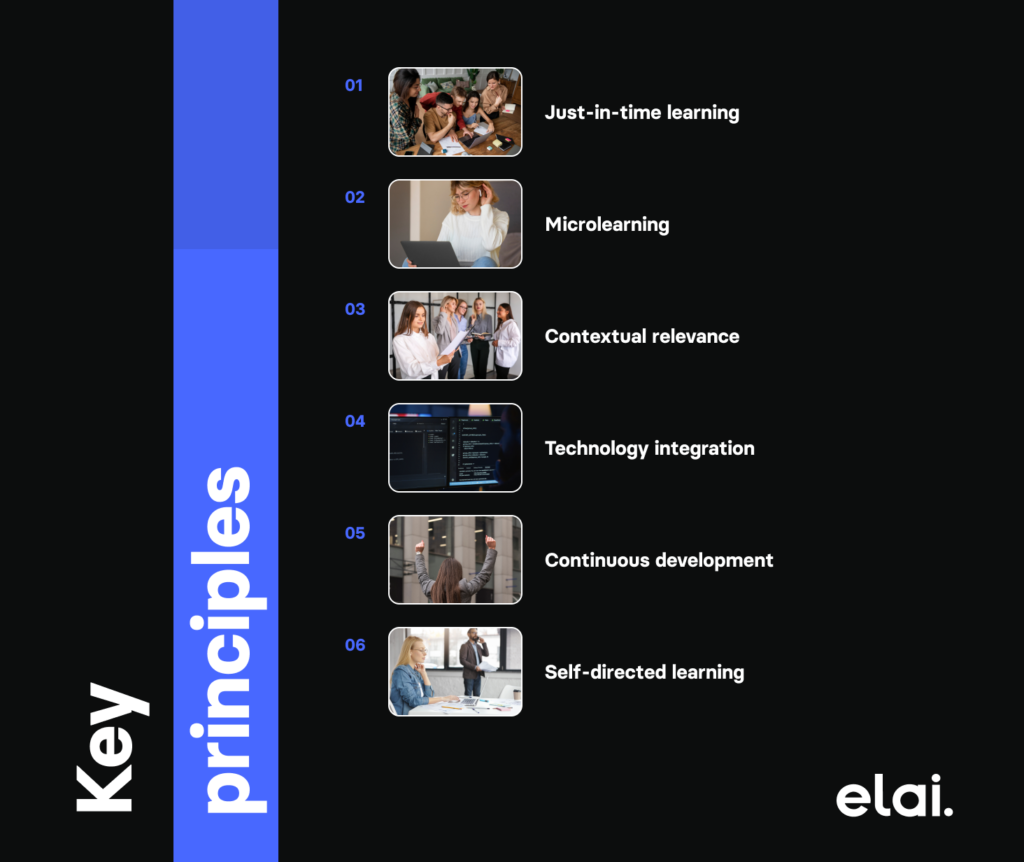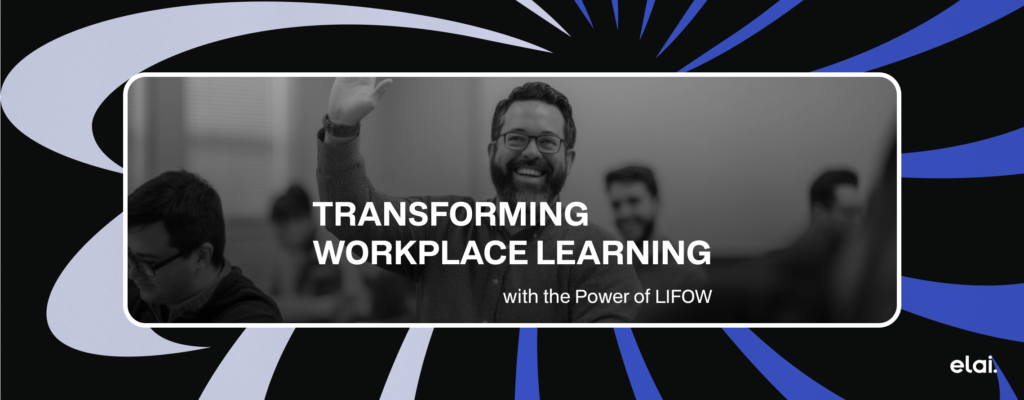Nowadays, when the modern business environment promotes new fast-changing trends and initiatives, it’s important to come up with new approaches to knowledge sharing within the corporate world. One such strategy is LIFOW, or Learning in the Flow of Work, which is revolutionizing workplace professional development. This means that learning is actually blended with practice, which is quite a departure from the formal ways of training staff.
Understanding LIFOW
Learning in the Flow of Work is based on the crucial principle: the learning can be considered effective only in case it is completely relevant to the employees’ needs and can be immediately applied in practice. LIFOW differs from conventional training programs that require stepping away from employees’ workflow as it incorporates the new learning opportunities directly into the working process which makes this approach very practical.
Key Principles of LIFOW:
- Just-in-time learning: Information is delivered at the precise moment of need, allowing employees to immediately apply new knowledge to solve real-world problems.
- Microlearning: Content is broken down into small, digestible chunks that can be quickly consumed without significant interruption to work. This approach aligns with modern attention spans and workflow dynamics.
- Contextual relevance: Learning materials are tailored to specific job roles, tasks, and individual needs, ensuring high applicability and engagement.
- Technology integration: LIFOW leverages AI, machine learning, and other advanced technologies to deliver personalized learning experiences within existing work platforms.
- Continuous development: Learning becomes an ongoing process rather than a series of isolated events, fostering a culture of continuous improvement.
- Self-directed learning: Employees have more control over their learning journey, choosing what, when, and how to learn based on their needs and preferences.

Implementing LIFOW
Successfully implementing Learning in the Flow of Work requires a multifaceted approach:
- Technology infrastructure: LMSs require a solid foundation in enterprise digital communication that can enable the delivery of learning content within work applications. This might include Learning Experience Platforms (LXPs), Knowledge Management Systems, and AI-based recommendation systems.
- Content strategy: Teaching and learning materials require restructuring to be consumable in a short span and usable from the comfort of the learners’ homes.
- Cultural shift: Employers must constantly promote learning as one of the key company values and ensure that their subordinates actively look for knowledge during their working day.
- Performance support tools: The use of real-time support connected to a student, like a chatbot or an added layer of an app that gives information/lessons in real-time, is an example of point-of-need learning.
- Data analytics: Learning analytics of learner engagement and knowledge mastery, along with the mapping of content and context to learners’ needs, is a necessary element in the implementation of LIFOW.
Benefits of LIFOW
The adoption of Learning in the Flow of Work offers numerous advantages:
- Improved knowledge retention: Applying new information on the job quickly means that the knowledge acquired is fresh and is assimilated into the organization’s framework.
- Increased productivity: By reducing the amount of time that an organization’s employee spends in training courses while addressing organizational needs at the right time, productivity in an organization is likely to increase.
- Cost-effectiveness: Minimizing the frequency of the management-sponsored learning events and using current tools can help to decrease the cost of learning and development.
- Personalized learning experiences: Machine learning algorithms can suggest the development program to every worker as an individual with special areas and skills, which creates high expectations for the employee’s further professional advancement.
Challenges and Considerations
While LIFOW & AI offers significant benefits, it’s not without challenges:
- Technology adoption: The strategies require the adoption and development of correct technologies that can be expensive and difficult to incorporate.
- Content creation: The creation of high-quality learning content in the form of Mi.numbered briefs does demand a considerable amount of time, effort, and specialization.
- Measuring effectiveness: The conventional measures of learning may not be appropriate, meaning that there is a need to come up with different ways of measuring the effectiveness of the LIFOW initiatives.
- Balancing depth and brevity: Sustaining the exploration of microlearning without ignoring the question of depth, which is one of the problems of creating microlearning.
- Privacy concerns: LIFOW is data-driven, which means that it may cause the issue of privacy infringement and data safety among the employees.
The Future of LIFOW
Yet, as AI and machine learning progress, LIFOW has room to progress at greater rates, thus resulting in even greater opportunities. Future developments may include:
- Predictive learning: Recommendations that are based on an employee’s work patterns and the tasks assigned to him/her in the near future.
- Augmented reality integration: Structured training methods that incorporate information and directions in a live manner as the employees employ various activities.
- Social learning enhancements: Enhanced means for sharing knowledge within one’s workplace and work-related training and development.
- Adaptive learning paths: Complex formulas that get updated every time they generate recommendations to learn depending on the person’s performance as well as the current demands in his line of work.
Conclusion
LIFOW is a shift in the paradigm of professional learning as this approach reflects the demand of today’s organizations and personnel. On the premise of converting learning into an synergy of work and destiny, LIFOW is the opportunity to foster more adaptive, knowledgeable, and motivated employees. Because of the ongoing growth in technologies and the rise in awareness of the importance of learning throughout the working period of the employees on the part of the organizations, LIFOW has the potential to become the key competency in the talent management solutions of the learning environment.
FAQ
What is Learning in The Flow of Work?
Learning in the Flow of Work (LIFOW) is a professional development model that seeks to incorporate learning into a worker’s working context. Compared to conventional approaches to skill development in which learning occurs outside working conditions and environments, LIFOW delivers learning content at the employees’ workplace. As such, this model enables the acquisition of new knowledge and skills at the precise moment they are required and therefore promotes learning that is less disruptive, more effective, and more relevant. The aim is to use education as an integrated component of work, optimizing performance and promoting growth.
What is an example of Learning in the Flow of Work?
An example of Learning in the Flow of Work could be real-time, contextual help or a tooltip that appears on the screen of an employee while s/he is using it. For instance, a marketing man is using a CRM platform while working on a new email campaign, and within a few seconds, the system may offer a bit of a lesson or just a word of advice on how to better segment a list. This also enables the employee to acquire a new feature or technique when the need arises and in deed apply it in her work making it or her work easier and of better quality without having to attend yet another training session.
How to Drive Learning in the Flow of Work?
One of the pillars of the implementation of LIFOW is the use of applications such as an LMS that supports microlearning and real-time support within the flow of work. Management should strive to foster a learning culture in the organization, leverage data and AI to personalize learning and incorporate learning into business workflows. It also guarantees that learning occurs within the current working context with a view of making it practical and immediate, thus fostering both personal growth and organizational effectiveness.

